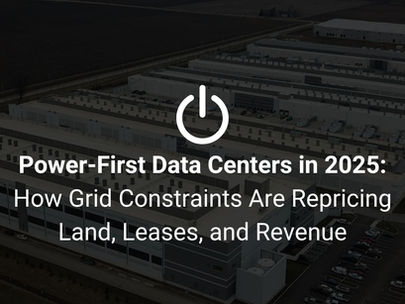

Power-First Data Centers in 2025: How Grid Constraints Are Repricing Land, Leases, and Revenue
In 2025, the U.S. data center boom isn’t being held back by demand; it’s being held back by power. Everyone wants more computing power, but projects hit the same wall of grid constraints: substation capacity, crowded interconnection queues, and transmission upgrades that can take years, shrinking the number of sites that can actually get energized on schedule. The successful developers aren’t just the ones with the biggest checks but they’re the ones who lock in land with rea


LandGate's "Behind the Meter" Natural Gas Data is Fueling the AI Energy Demand
The Artificial Intelligence (AI) revolution has created an unprecedented surge in energy demand, driven by hyperscale data centers that require massive, reliable, and often redundant power. This and other major industry investments have intensified the focus on natural gas power plants as a critical, scalable solution to complement renewables. However, data center developers assessing natural gas face two major obstacles: understanding where and how much is available, and the


This Week in Data Center News: 12.8.2025
The relentless pursuit of AI compute capacity continues to be the dominant narrative, but this week, the industry is grappling with intensifying regulatory and public resistance , even as new technologies emerge to support the power grid. Financial markets affirmed their bullish stance on digital infrastructure with a significant investment deal, while a major outage highlighted the critical importance of operational redundancy. Nationwide moratorium demanded by environmental


Future-Proofing Site Selection: Using Predictive Analytics to Navigate Grid Constraints
Siting data centers has become increasingly complex as developers contend with limited available offtake capacity on regional electric grids. In many high-demand markets, even where adequate generation exists, incremental load from large offtakers can trigger network constraints, curtailment, and reduced deliverability. As a result, many regions with active data center development already exhibit minimal headroom without substantial transmission upgrades. Accurately forecas


This Week in Data Center News: 12.01.2025
The beginning of December 2025 highlights the data center industry’s critical focus on power at every level from hyperscale site selection to grid resilience and next-generation power sources. This week's developments underscore the aggressive capital investment required for AI infrastructure, but also the immediate, high-stakes consequences when power and cooling systems fail. The message remains consistent: scale is mandatory, but operational redundancy and power innovation
























